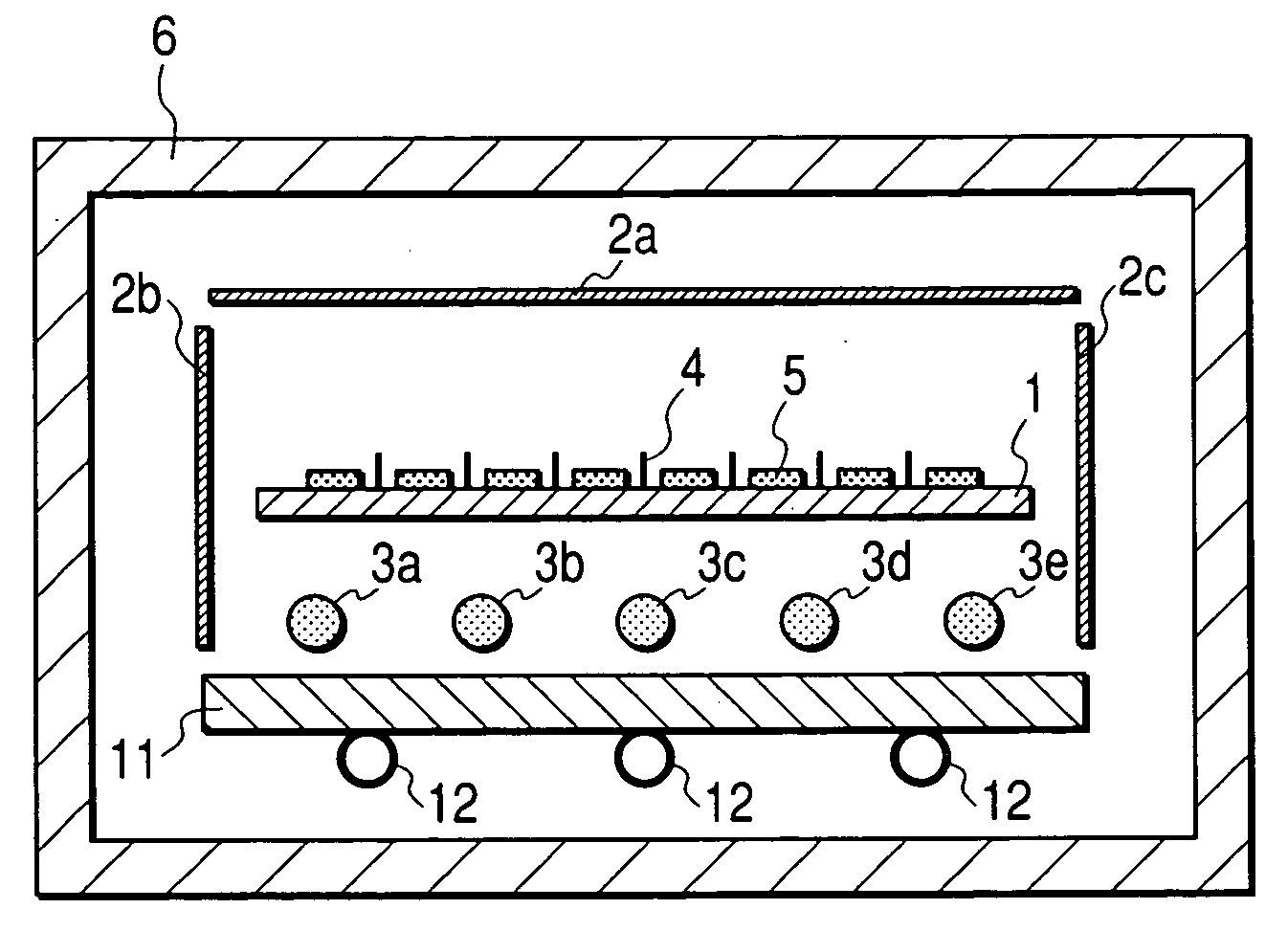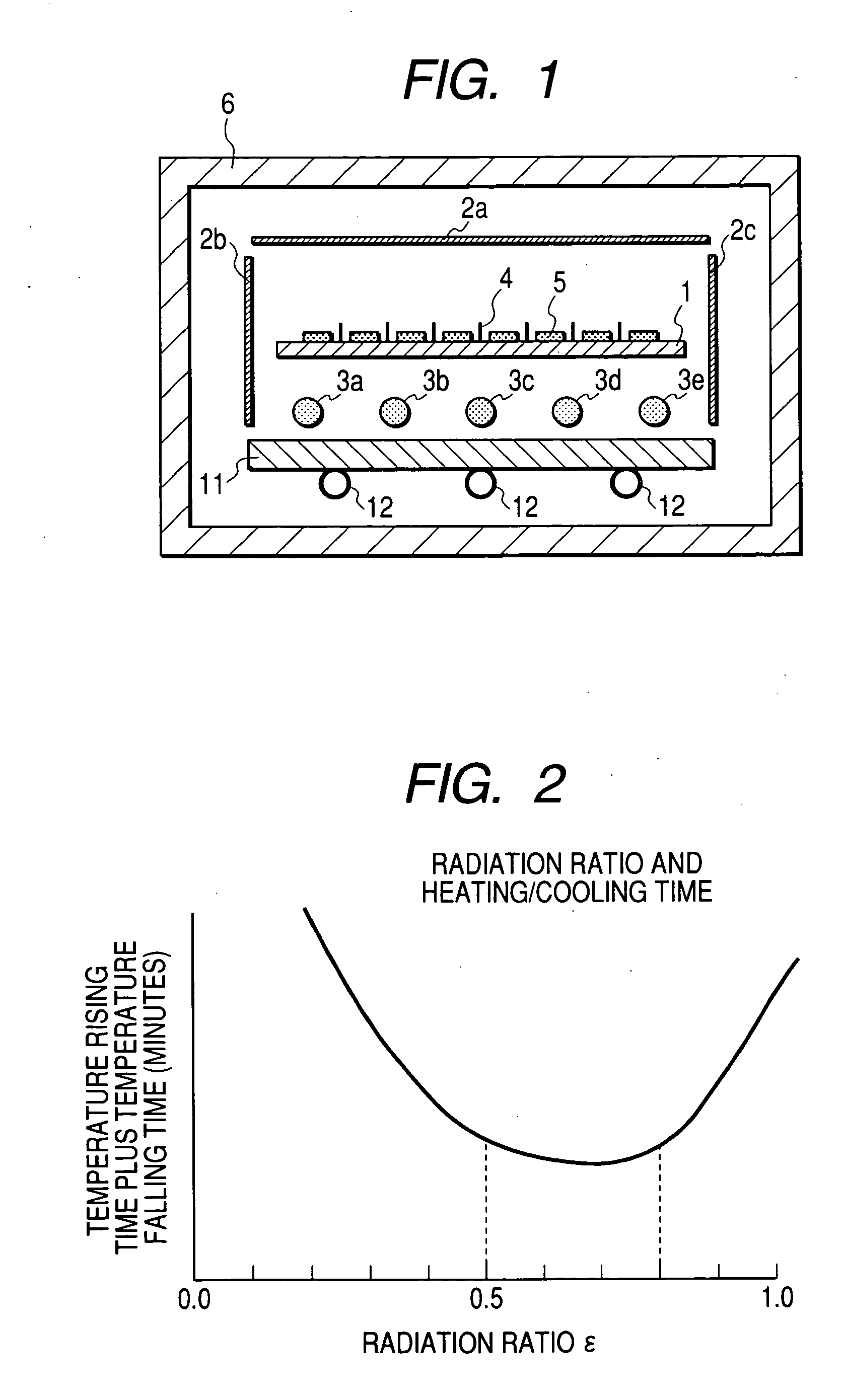Method of effecting heating and cooling in reduced pressure atmosphere
a technology of atmosphere and heating and cooling, applied in the field of effecting heating and cooling in reduced pressure atmosphere, can solve the problems of not taking the necessary steps to effect both heating and cooling efficiently, the total requisite time for heating and cooling is reduced, and the effect of improving efficiency
- Summary
- Abstract
- Description
- Claims
- Application Information
AI Technical Summary
Benefits of technology
Problems solved by technology
Method used
Image
Examples
Embodiment Construction
[0019]FIG. 1 is a sectional view of an apparatus used in a heating / cooling method of the present invention, showing the features of the present invention most clearly.
[0020] Reference numeral 1 indicates a substrate, reference numerals 2a through 2c are reflection plates constituting heat reflecting members, reference numerals 3a through 3e indicate heaters serving as heat generating members (heating means), reference numeral 4 indicates spacers, reference numeral 5 indicates on-substrate matter, reference numeral 6 indicates a vacuum chamber, reference numeral 11 indicates a cooling plate constituting a cooling member also having a heat reflecting function, and reference numeral 12 indicates cooling pipes.
[0021] In the drawing, the substrate 1 is an electron source substrate constituting a component of the container of an image display apparatus; on the surface of the substrate 1 (on the upper side as seen in the drawing), there is fixed the on-substrate matter 5, which consists ...
PUM
| Property | Measurement | Unit |
|---|---|---|
| emissivity | aaaaa | aaaaa |
| emissivity | aaaaa | aaaaa |
| surface emissivity | aaaaa | aaaaa |
Abstract
Description
Claims
Application Information
 Login to View More
Login to View More - R&D
- Intellectual Property
- Life Sciences
- Materials
- Tech Scout
- Unparalleled Data Quality
- Higher Quality Content
- 60% Fewer Hallucinations
Browse by: Latest US Patents, China's latest patents, Technical Efficacy Thesaurus, Application Domain, Technology Topic, Popular Technical Reports.
© 2025 PatSnap. All rights reserved.Legal|Privacy policy|Modern Slavery Act Transparency Statement|Sitemap|About US| Contact US: help@patsnap.com


